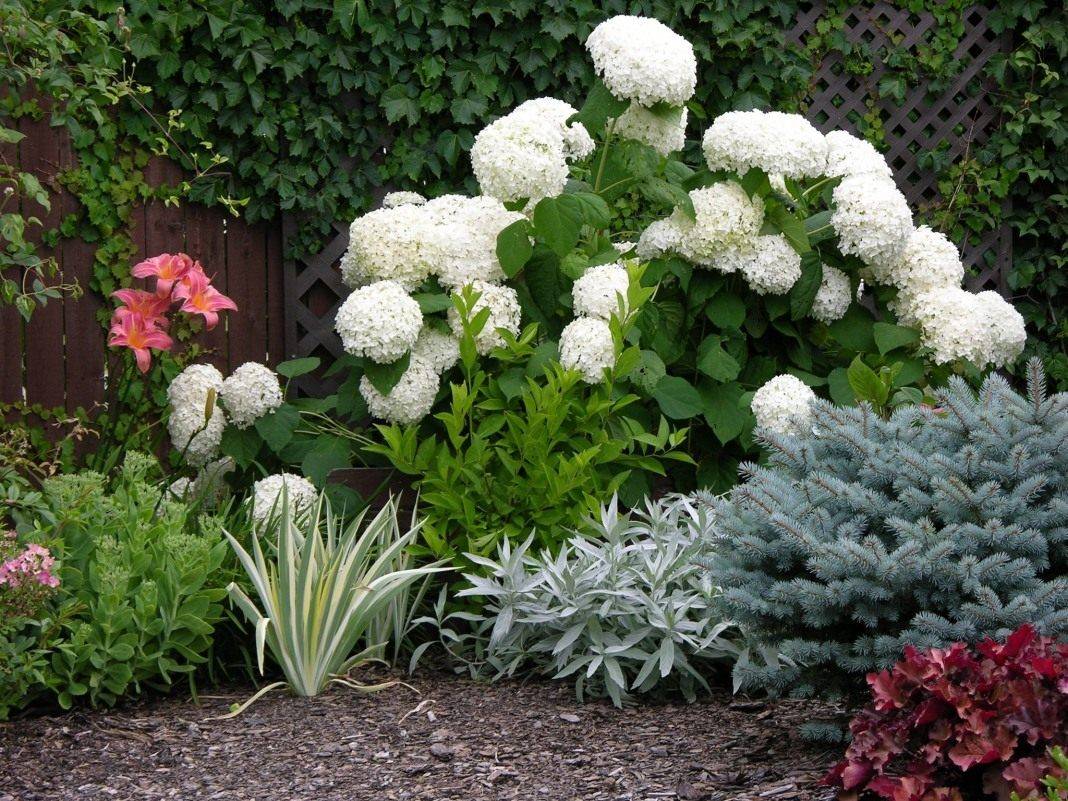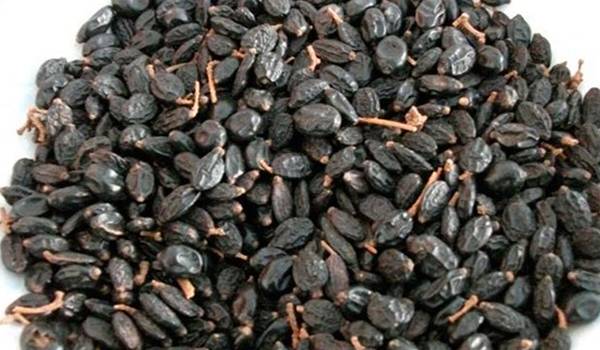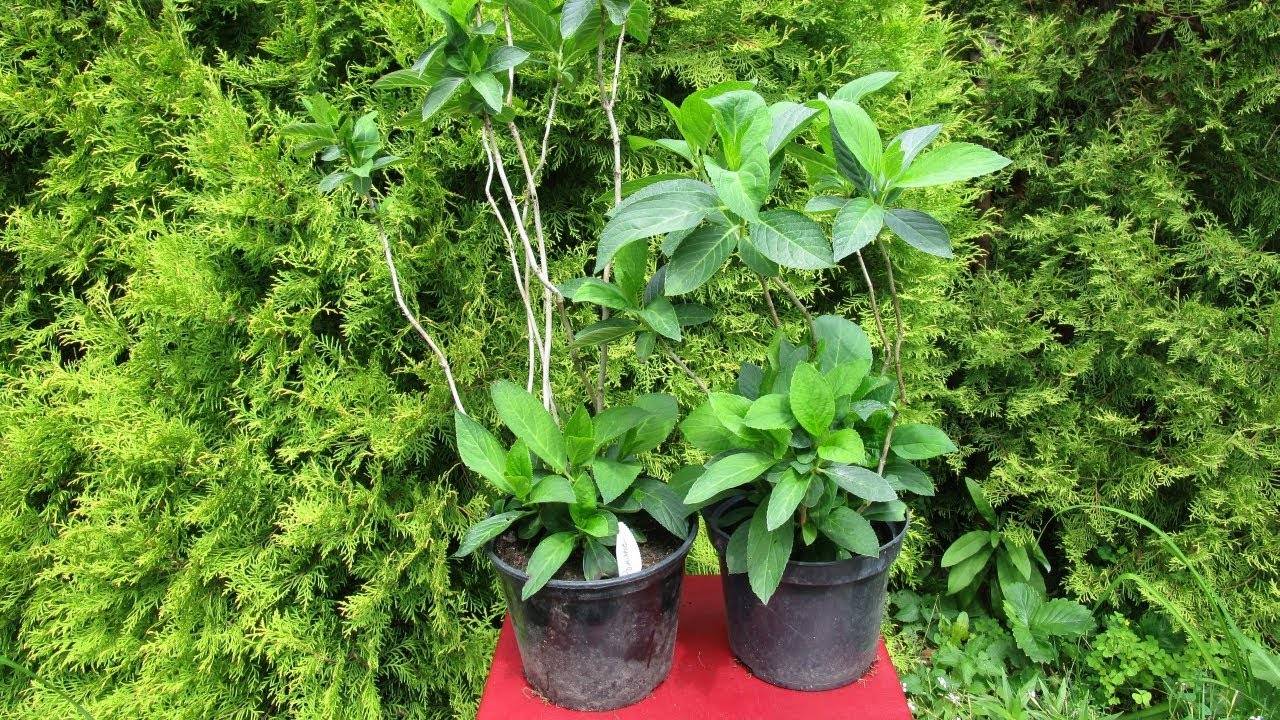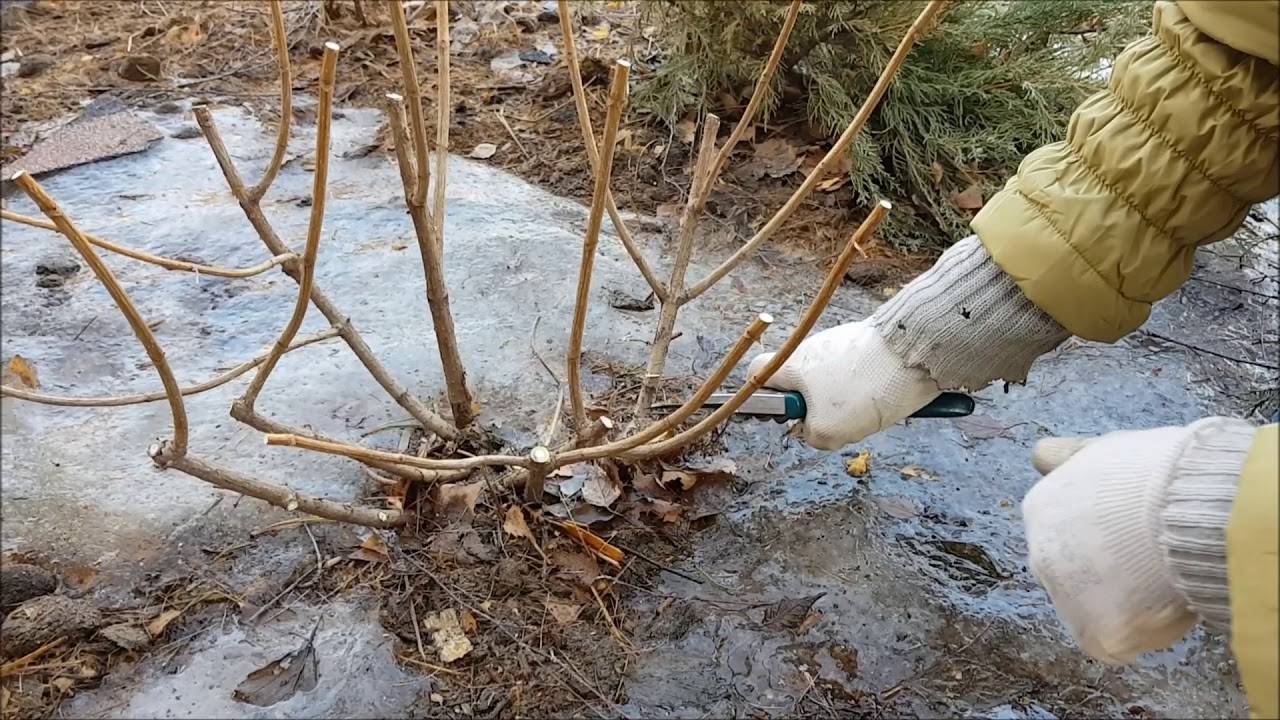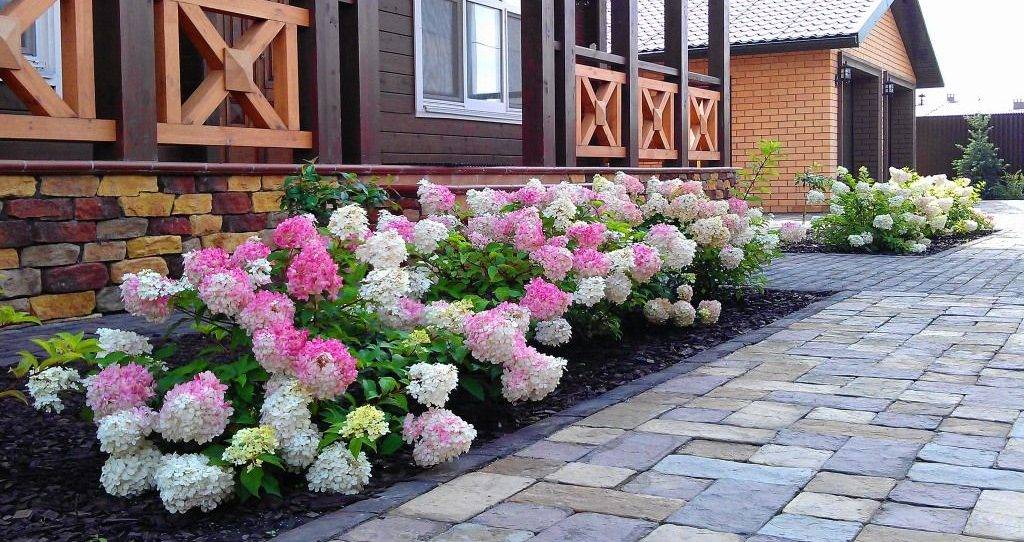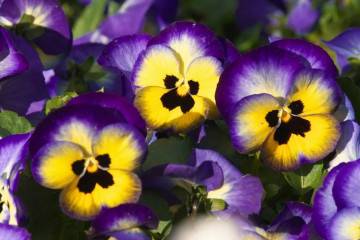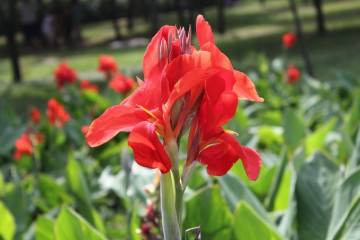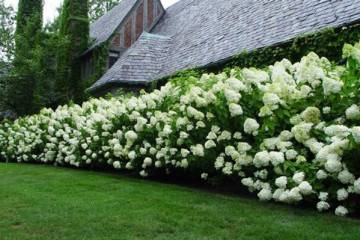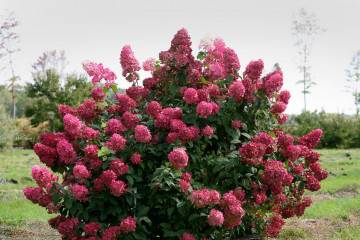Planting hydrangeas outdoors in spring
Content:
Luxurious hydrangea can decorate any garden composition. Even when grown in low light conditions, the perennial crop pleases the owner of the site with abundant and long flowering. Most flower growers prefer this particular garden flower, decorating their territories near the house. However, for the plant to take root, it is important to properly plant the seedlings or seeds and organize the necessary planting care.
Hydrangea: Planting and Outdoor Care for Beginners
To propagate a perennial crop, you can use one of the following methods:
- cuttings;
- dividing the bush;
- layering.
It is also important to read the information on how to care for your hydrangea.
Optimal timing and choice of location
On the territory of Siberia, the Urals and the Moscow region, hydrangea seedlings are planted in open ground in mid or late May, when the threat of night frosts has passed. If you plan to plant seedlings in a country house in the southern region, then the procedure can be carried out both in the spring and in the autumn months. They will have time to take root and will endure the winter frosts.
When choosing an area for planting, it is worth giving preference to places that are illuminated by the sun in the morning and evening hours, and slightly shaded during the day. Gardeners believe that the best place for planting is considered to be an area close to a tree, which can create the necessary shade during the day.
Giving preference to areas near garden paths, it should be borne in mind that seedlings cannot be grown right next to the paths. Spreading bushes as they grow will create difficulty when passing this section. It is best to plant the bushes at a distance of 100 cm from the garden path.
See below for more details on how to plant and care for a hydrangea.
Landing pit and soil
The dimensions of the planting pit depend on the size of the seedling itself, and, if it is necessary to add additional components to create the most suitable soil in terms of composition, it will be necessary to dig a sufficiently deep depression.
As a rule, the planting of hydrangeas, whose age has reached 1-2 years, is carried out in a hole, the size of which is 30 × 30 cm.For large bushes, you will need to dig a depression, the size of which is within 50 × 50 cm.
The acidity of the soil at the planting site of the hydrangea should be in the range of 5.2-5.7 pH. If there is a need to increase the acidity of the soil, it is worth mixing the soil with a small amount of high peat and rotted sawdust of coniferous trees. The listed components are considered effective acidulants. In addition, it is advisable to add mineral fertilizing to the soil, namely:
- superphosphate;
- potassium sulfate.
Planting seeds
If desired, you can grow a perennial from seeds, which the florist should plant in mid-February. Below you can find information on how to plant a hydrangea in this way.
Step-by-step process of planting seeds:
- Before planting a hydrangea, you need to germinate the seeds. To this end, it is worth laying them out on a damp piece of gauze. As soon as the seeds swell, you can start planting work.
- Planting containers are filled with peat, sand and leafy soil. Seeds are sown on top of the soil mixture. You should not deeply deepen them. The planting material is sprinkled with a small amount of sand.
- The soil is abundantly moistened with a spray bottle, and the container is covered with a piece of glass.
- The container is transferred to a room where the temperature reaches 25-26 ° C. The glass is periodically opened to ventilate, and the soil is moistened as needed.
- As soon as the seedlings appear, the glass can be removed from the pot. After 2 leaves are formed on the sprouts, they should be cut into separate containers. The pots are rearranged on the windowsill, but it is important to shade the seedlings in the daytime from direct sunlight. Further care of the hydrangea will not be difficult if you follow the recommendations of agricultural technicians, which are described below.
After the seedlings have been cut into separate containers, the plants should be properly cared for, the features of which can be found below:
- the soil in which the hydrangea is planted is recommended to be systematically loosened, watered and fed into it;
- the presence of bright diffused lighting in the place where the pots with seedlings are exposed has a positive effect on the growth and development of young plants. By placing the containers in a shaded area, you can provoke the appearance of faded foliage and slower crop growth. Direct sunlight causes burns on the leaves. It is best to place the containers with plants on the windowsills on the south side. At the same time, the flowers are slightly shaded in the daytime, which will make it possible to avoid the appearance of burns;
- temperature regime. In the summer, the temperature in the room should be in the range of 20-28 ° C, but in the cold season, it is better to move the plant to a dark room, the temperature in which reaches 20-21 ° C;
- high level of air humidity. Hydrangea needs not only systematic watering, but also maintaining the humidity in the room within 65-70%. Seedlings need daily spraying from a spray bottle. It is also advisable to use a humidifier in the room;
- top dressing. During the growing season, it is advisable to apply fertilizers to the soil several times, for example, agriculture, agrovit and "Golden spark". You can also use special food for azalea, hydrangea and rhododendron. There is no need to fertilize the soil during the winter months. It is unacceptable to introduce ash into the soil, since the component helps to reduce acidity;
- timely transplantation is an important stage in the care of seedlings. In a large or too small container, flowers do not develop well. The moisture received during watering is not fully absorbed, which can cause stagnation of water and rotting of the root system.
How to plant a hydrangea in the open ground in spring
Step-by-step guide to transplant seedlings:
- How to grow hydrangea in the garden? Having chosen the most suitable place for planting flowers, it is worth starting to prepare the planting pits.
- Fertilizers should be applied to the dug holes.
- Spread the roots of the seedlings and deepen into the planting holes.
- Fill the resulting voids in the recess with a soil mixture.Cover the roots with soil so that it slightly covers the root collar. Deeper deepening provokes rotting of the root system.
- Tamp the soil surface in the planting zone.
- Moisten the soil abundantly and evenly.
- Mulch the area of the trunk circle with a layer of pine bark, sawdust or peat. Mulching makes it possible to maintain moisture for a long time and slightly acidify the soil. For additional acidification of the earth, you can scatter a couple of tablespoons of colloidal sulfur over the hole covered with soil.
- Cut off the tops of the bushes, which will make it easier for the bushes to take root in a new place. Sprinkle the hemp obtained after cutting with a small amount of mulch.
Hydrangea care in the first year of planting
Caring for a perennial crop is simple. The most important thing is to systematically moisten the soil. It is recommended to pour 35-50 liters of water at room temperature under each bush. The frequency of watering in the warm season is every 2-3 days. If the near-trunk circle is mulched, then the frequency of watering is reduced to 1 time in 5-7 days. To improve aeration of the root system, you should systematically loosen the soil around the bushes. How deep should it be? The recommended depth indicator is 45-55 mm.
To achieve abundant and long-lasting flowering, every spring and summer, flower growers recommend making a comprehensive top dressing. In mid-April, a urea solution is introduced into the soil (20-22 g of the component is stirred in a bucket of settled rainwater). Under each adult shrub, you will need to pour several buckets of such a solution.
After the plant has bloomed, a complex mineral dressing should be added to the soil. Throughout the summer, slurry is poured under the bushes. However, it is important not to overdo it with the amount of dressing, because inflorescences of too large size break fragile shoots. To prevent the branches from breaking off, it is recommended to control the amount of fertilizer applied to the soil and tie up the shoots.
Pruning hydrangea
Hydrangeas, whose age has reached 4-5 years, need systematic pruning. Varieties that bloom on the branches of the current year should be pruned in early spring until the buds have blossomed and sap flow has not begun. Otherwise, the plant will run out of juice and die.
As a rule, the tree-type hydrangea, which is characterized by early awakening, is subjected to the first pruning. Long shoots are pruned at a height of 4 buds. The trimmed parts of the shoots can be used as cuttings.
Be careful when pruning the paniculate perennial species. Last year's branches are pruned by only a third. Even such small pieces can be used as cuttings.
Large-leaved perennial almost does not need pruning. It is enough only to systematically carry out anti-aging pruning, removing dried or broken shoots, branches growing inside the shrub.
Hydrangea care after flowering and preparation for winter
After the flowering of a perennial culture, it is worth cutting off the inflorescences that have withered. The bases of the bushes are highly earthed, the site is mulched, which makes it possible to organize the protection of plants from severe frosts.
Lignified shoots are able to withstand frosts even without shelter, if, of course, the shrub is planted in the southern regions.However, it is better not to risk it and take care of preparing the hydrangea for the harsh winter in advance:
- In mid-autumn, young bushes are covered with a layer of dry soil. The branches of plants that are more than 3 years old are bent to the surface of the soil.
- The shoots are covered with a layer of lutrasil. At the edges, the material is fixed with bricks, which will make it possible to prevent the material from tearing off by gusts of wind.
- Adult shrubs are neatly tied with twine and wrapped in a layer of lutrasil or spandbond. A cylindrical frame is constructed around the shrub. For its construction, you can use a metal mesh. The distance from the net to the bush should be within 22-25 cm. The height of the structure should exceed the height of the perennial by 10-12 cm. The area from the hydrangea to the net is filled with dry foliage. It will be possible to remove the shelter only at the end of March, when the frosts have passed.
Hydrangea is a gorgeous plant that can become a real decoration of a garden plot. If desired, seedlings can be grown at home, however, in order for them to grow healthy and delight with lush flowering, you will need to organize proper care of the crop.
